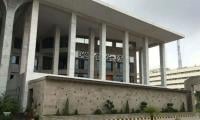When Fawad Hasan Fawad became the caretaker federal minister for privatization on September 12, 2023 and was given the responsibility to look into the privatization of Pakistan International Airlines (PIA), people thought that the days of the perpetual loss-maker were over.
People also thought that the new minister meant business, but it has been during his tenure that the airline’s planes couldn’t take off because PSO, a state-owned oil company, refused to extend credit facility to the airline, which could have helped it fund its fuel supplies. Imagine: the country’s national airline’s planes were grounded for lack of fuel.
After much planning and brainstorming, there is again discussion on the privatization of the national carrier. Now an adviser has been appointed to execute the privatization plan. Those who study the performance of state-owned commercial organizations and watch their antics to survive despite incurring huge losses year after year know well how these loss-making entities survive.
PIA is not the only one; its twin, the Pakistan Steel Mills, dents the national exchequer every year since it went out of commission in 2015. But PIA attracts more attention while the PSM lies unobtrusively. Reportedly, PIA flights are often late or are cancelled, leaving passengers with long faces.
The privatization of PIA is part of the IMF deal. Therefore, the airline’s transfer to private hands seems quite likely. PIA started going into losses in 2011. By the end of 2018, the airline had accumulated $3.3 billion in debt. Foreign companies stopped supplying spare parts for PIA planes. It is under the IMF’s pressure that the government has decided to privatize the airline.
Due to the losses the airline has caused to taxpayers, its privatization will give them a sigh of relief. But why should the IMF ignore the privatization of other loss-makers? Pakistan Steel Mills, for instance, deserves as much attention from the IMF as PIA.
It is hard to understand why public-sector organizations go into losses worth billions every year and are allowed to continue to operate, adding more losses to the exchequer. Would any of the leading business tycoons like to maintain such a black hole in their list of industrial units? Why does people have to bear the per-person loan burden of Rs250,000 so that our government keep running loss-making entities? How has the government trapped itself into a whopping sum of Rs64 trillion in internal and external loans, according to a State Bank statement? Clearly, the loss-making public sector organizations are to blame for it.
In principle, the government must neither establish commercial organizations in the public sector nor invest public funds in them. Establishing new industries exclusively falls in the domain of the private sector and not of the government. Commercial organizations need professional handling. Industrialists in the private sector know how to manage them and how much staff and labour is needed to turn them.
A similar organization in the public sector will likely have many executives and more labour force. The executives will have shiny vehicles, houses, and other facilities such as free electricity, gas and telephones. This proves why public-sector organizations go into losses every year.
In small and medium enterprises (SMEs) of the public sector, overstaffing is the main problem. Many believe that SMEs are established with a view to provide employment to those recommended by politicians and senior bureaucrats.
If the government is serious and means business, it should consider declaring new industrial estates by providing incentives to entrepreneurs. For example, vast stretches of parched land is available from Shadan Lund to Taunsa on the Indus Highway in Dera Ghazi Khan.
Every ruling political class seems devoid of thinking about the future of the ever expanding population in rural areas. Controlling the population and providing jobs to the jobless must be the mission of every government. And no more industry must be established in the public sector.
The writer is a freelance columnist based in Lahore. He can be reached at: pinecity@gmail.com
Earth Day protests carry a vital message that is relevant 365 days a year. — AFP File Earth Day is celebrated every...
People walk along a market in Lahore on May 17, 2023. — AFP/FileMany of us had hoped that the general election...
Packs of freshly printed $20 notes are processed for bundling and packaging at the US Treasury's Bureau of Engraving...
People stand in line up as election officials check their ballot papers during voting general election at a polling...
Women show their voter identity cards as they stand in a queue before casting their votes in Agartala. — PTIThe 18th...
Former prime minister Imran Khan. — Instagram/ imrankhan.ptiAn old saying has it that “when you dance with the...







